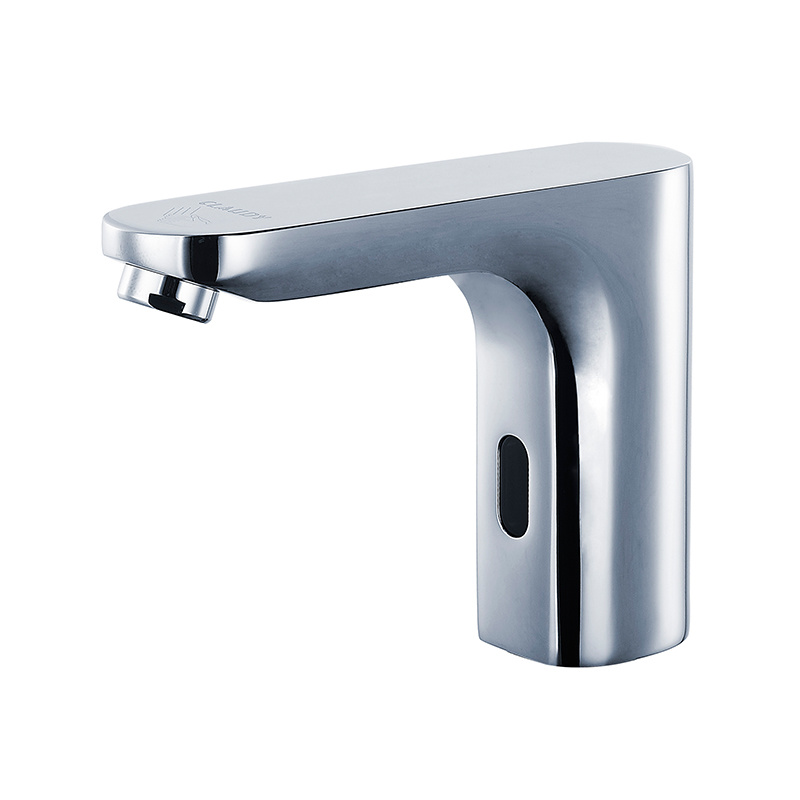language
English
العربية
বাংলাদেশ
Български
Hrvatski
Česky
Dansk
Nederland
 Esperanto
Esperanto
Slovenski
Filipino
Suomi
Français
Maori
 Shqiptare
Shqiptare
Georgian
 Euskara
Euskara
Deutsch
Ελλάδα
ישראל
इंडिया
Magyarország
Ísland
Indonesia
Irlanda
Italia
日本語
Sovensko
Հայաստան
한국
Kyrgyz
ປະເທດລາວ
 Zulu
Zulu
Latvian
Lithuanian
Luxembourgish
 Latinus
Latinus
Macedonian
Малайская
Maltese
Монгол улс
 Cymraeg
Cymraeg
ဗမာ
 தமிழ்
தமிழ்
नेपाल
Norge
ایران
Polska
Portugal
România
Российская
Србија
 Slovak
Slovak
Србија
 Slovak
Slovak
Bosanski
Slovenian
Беларус
España
Sverige
Точик
ประเทศไทย
Türk
Azərbaycan
Uzbek
 Afrikaans
Afrikaans
Việt Nam
Essential Insights on Automatic Faucet Valves for Modern Bathroom Solutions
Time:
2024-12-20
Automatic faucet valves have become an essential feature in contemporary bathroom designs, particularly within the realm of consumer electronics focused on sanitary solutions. These valves, which enable touchless operation of faucets, are engineered to enhance user experience by providing convenience and promoting hygiene. Let's delve into the technology, benefits, and applications of automatic faucet valves for electric water heaters.
At the core of automatic faucet valves is infrared sensor technology, which detects the presence of users. When a user approaches the faucet, the sensor activates the valve, allowing water to flow without any physical contact. This functionality not only reduces the spread of germs but also conserves water, as the faucet only operates when necessary. Many models are designed to automatically shut off after a predetermined time, minimizing water waste and contributing to eco-friendly practices.
The installation of automatic faucet valves is straightforward, making them an attractive choice for both homeowners and commercial settings. They can be integrated into existing plumbing systems with ease, allowing for a quick upgrade to any sanitary space. Moreover, the sleek design of these valves complements modern bathroom aesthetics, making them a favored choice for renovation projects.
One of the significant advantages of automatic faucet valves is their ability to improve hygiene. Traditional faucets require users to turn knobs or handles, which can be a breeding ground for bacteria. In contrast, touchless operation reduces the risk of cross-contamination, making automatic faucet valves particularly beneficial in public restrooms, hospitals, and kitchens. This feature aligns with the increasing consumer demand for health-conscious products in the sanitary market.
Additionally, automatic faucet valves contribute to the overall efficiency of electric water heaters. By controlling water flow with precision, these valves help maintain optimal temperatures and reduce energy consumption. Consumers looking for sustainable options in bathroom fixtures will find that automatic faucet valves offer both practicality and efficiency.
As the demand for smart and efficient home technologies continues to rise, the integration of automatic faucet valves into bathroom designs is likely to expand. Their ease of use, water-saving capabilities, and hygiene benefits make them a smart investment for anyone looking to upgrade their sanitary facilities.
In conclusion, automatic faucet valves represent a significant advancement in bathroom technology. Their ability to enhance hygiene, conserve water, and improve energy efficiency aligns perfectly with modern consumer expectations. For those in the consumer electronics sector focused on sanitary solutions, understanding the intricacies of automatic faucet valves is crucial for meeting the evolving needs of customers.
At the core of automatic faucet valves is infrared sensor technology, which detects the presence of users. When a user approaches the faucet, the sensor activates the valve, allowing water to flow without any physical contact. This functionality not only reduces the spread of germs but also conserves water, as the faucet only operates when necessary. Many models are designed to automatically shut off after a predetermined time, minimizing water waste and contributing to eco-friendly practices.
The installation of automatic faucet valves is straightforward, making them an attractive choice for both homeowners and commercial settings. They can be integrated into existing plumbing systems with ease, allowing for a quick upgrade to any sanitary space. Moreover, the sleek design of these valves complements modern bathroom aesthetics, making them a favored choice for renovation projects.
One of the significant advantages of automatic faucet valves is their ability to improve hygiene. Traditional faucets require users to turn knobs or handles, which can be a breeding ground for bacteria. In contrast, touchless operation reduces the risk of cross-contamination, making automatic faucet valves particularly beneficial in public restrooms, hospitals, and kitchens. This feature aligns with the increasing consumer demand for health-conscious products in the sanitary market.
Additionally, automatic faucet valves contribute to the overall efficiency of electric water heaters. By controlling water flow with precision, these valves help maintain optimal temperatures and reduce energy consumption. Consumers looking for sustainable options in bathroom fixtures will find that automatic faucet valves offer both practicality and efficiency.
As the demand for smart and efficient home technologies continues to rise, the integration of automatic faucet valves into bathroom designs is likely to expand. Their ease of use, water-saving capabilities, and hygiene benefits make them a smart investment for anyone looking to upgrade their sanitary facilities.
In conclusion, automatic faucet valves represent a significant advancement in bathroom technology. Their ability to enhance hygiene, conserve water, and improve energy efficiency aligns perfectly with modern consumer expectations. For those in the consumer electronics sector focused on sanitary solutions, understanding the intricacies of automatic faucet valves is crucial for meeting the evolving needs of customers.





